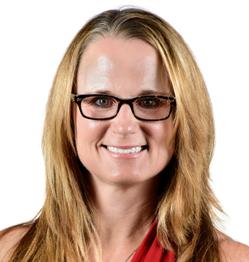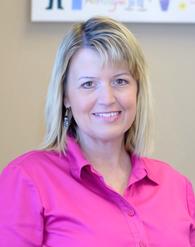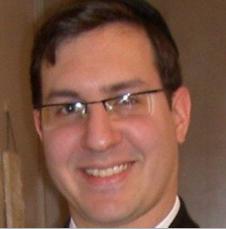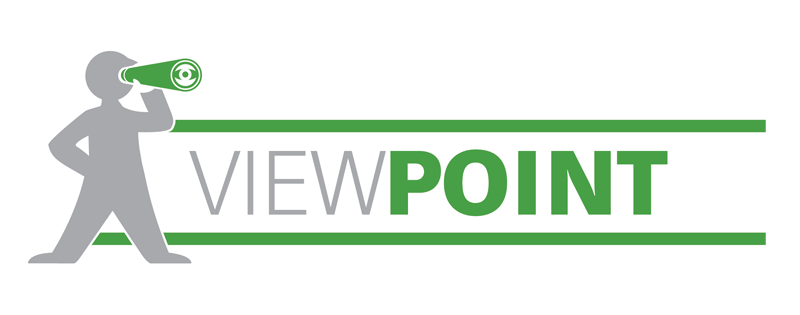Three Patient-Centered Medical Home Transitions
September 22, 2015 | Frontline Stories
We talked to three practices about their recent experiences in achieving NCQA’s PCMH Program. Here they share their successes, trials and tips.
Shannon Fox-Levine MD
Palm Beach Pediatrics, Palm Beach, FL
HH: Thanks so much for taking the time to answer our PCMH transition profile. We know that other practices other practices can learn from and be encouraged by your experience. Now that you’ve completed the process, what do you see as the most tangible benefits of this transition?
 SFL: A major project that our team was responsible for was to create written policies for many of our practice’s “understood” policies. We now have a binder in each office with all of these policies to refer to so there is no confusion. All of our old staff have signed off on the policies and all of our new hires review them as part of their orientation.
SFL: A major project that our team was responsible for was to create written policies for many of our practice’s “understood” policies. We now have a binder in each office with all of these policies to refer to so there is no confusion. All of our old staff have signed off on the policies and all of our new hires review them as part of their orientation.
HH: Now that you’re on the other side of it, what would you say were your most positive outcomes and encouraging successes?
SFL: Identifying Asthma and High Risk Patient care coordinators was a very positive outcome. While we had ADHD care coordinators, we did not have designated people for some other chronic medical problems. The High Risk care coordinators are responsible for our patients with alternate vaccine schedules. This keeps the parents from flying under the radar and holds them to the plan that is agreed on by the providers. Another positive outcome was the significant improvement in obtaining our newborn metabolic screens from the state. This has always been a major hole in our care since we often never had these in the patient charts. Due to a change in workflow we improved from as low as 50% to close to over 100% in 2 of the 3 offices (and 89% in the 3rd) by the one-month visit.
HH: It’s so great to hear that your hard work is paying off with real measurable improvements like these. Of all the changes you’ve implemented, what would you say was the biggest one?
SFL: For the three chronic problems — asthma, ADHD and 7th grade well care — we were able to follow the recommendations for all of the counseling that is suggested. Again, while we may have been already doing a lot of this counseling, there was never very much documentation to prove that we did. This also included re-education of our staff and providers for these chronic problems so that we’re all on the same page in terms of the recommendations for care and counseling.
HH: Making sure everyone is on the same page is key and, as you said, now you have it documented which is so important. Overall, would you describe the process and outcomes as worthwhile in the end?
SFL: I think it was worthwhile, but NCQA definitely needs to consider making it more pediatric-friendly. We struggled over many factors that did not really pertain to the care of children. I also think if and when insurance plans recognize the certification it will be more worthwhile for practices. In Florida, we have incentives from three plans so far. Also, it is very costly for smaller practices. Not only are there the fees to NCQA, but even with a team of 7, we would not have been able to accomplish the level 3 certification without paying a consulting firm to decipher many of the factors, especially since they didn’t really pertain to pediatrics, making the interpretation even more of a challenge.
HH: You’re certainly not the only client we’ve heard from who would like to see the process become more accessible and translatable to pediatric practices. Now that you’ve come out on the other side of this process, can you tell me what the most valuable outcome or lesson was, and what?
SFL: The most valuable outcome for our practice was being able to organize and document appropriately what we already were already doing for the most part. We were then able to identify and focus on the factors that we weren’t doing in order to complete our medical home.
The most valuable outcome for our state was the experience that I personally went through to learn from this process. I am now using it to help the rest of our state in developing a state certified PCMH program. I know NCQA is working on national changes, but we are going to look at what NCQA HEDIS requirements are in our state, where we are lacking significantly, for example being number 49 of 50 states for adolescent immunization rates. Together with the medical directors for health plans — mostly Medicaid managed care so far — we are developing our own state program.
HH: That’s fantastic! What a great way to take your newfound knowledge and “pay it forward” and help everyone in your state. Thanks so much for taking the time to share your experience with us and our readers today. We’ll check back with you soon to hear how things are moving along with your state certified initiative.
Robin Warner, MD
Union Pediatrics, Union KY
HH: Congratulations on your recent PCMH recognition, Dr. Warner. We’re excited to talk to you about both the process and the outcomes. I’d like to start at the end, so to speak, by asking you how you feel about it now that you’ve completed the process. What would you say the most tangible benefits of this transition are?
 RW: From a practice standpoint, we are definitely more organized — we’ve improved our organizational workflow, which translates into better care for our patients. At the end of the day, that is always the most tangible benefit.
RW: From a practice standpoint, we are definitely more organized — we’ve improved our organizational workflow, which translates into better care for our patients. At the end of the day, that is always the most tangible benefit.
HH: What is the biggest change you’ve implemented at Union Pediatrics?
RW: Our morning huddles — which we actually do twice! We have one huddle on Fridays, for the week coming up, and then we have another team huddle on the day of the visit. We’ve also created a spreadsheet to check off which items are needed for each visit. Something as simple as a checklist can make a really big difference in ensuring absolutely nothing gets missed, and that means better, more effective care.
HH: I’m not surprised to hear you say the huddles make a big difference—we hear that from a lot of our clients! Looking back, what were your most positive outcomes and encouraging successes?
RW: We were able to show our families how important it is to utilize their medical home as a first line. Seeing families empowered to be pro-active in terms of healthcare is really encouraging. I’d say our most positive outcome was our ability to catch up people on “elective” vaccines, and on well-child care appointments.
HH: It really is all about empowering the patients and their families to be more engaged. It definitely sounds like your team has embraced the importance of “patient-centered” care and that you’re feeling the positive change. Of all the knowledge gained from this process, what would you say was the most valuable outcome or lesson learned from this process?
RW: The most valuable lesson — when we actually start looking at things objectively — was learning that we didn’t always do things as well as we thought we did.
HH: If you could turn back the clock, would you make the same decision to transition to PCMH? Do you think the process and the results are worthwhile in the end?
RW: Yes, it’s definitely worthwhile and I’d do it again. We’ve improved practice organization and we’re better able to make sure our patient get the care and attention they need from a medical home.
HH: Lastly, was there anything you didn’t find valuable in the process?
RW: PCMH is a program geared for adult patients, and that makes it difficult to implement for pediatrics. Our focus is on wellness, not disease management so at times it felt like trying to fit a circle into a square, but we did in the end. Unfortunately, insurers aren’t supportive of PCMH certification in our area, nor are they supportive of the PCMH concept — we’re confident they’ll come around and when they do, we’re ready!
Israel Zyskind, MD
Boro Park Pediatrics, NY
HH: Thanks for taking the time to speak with me today. I know your practice is very busy so let’s jump right in. What do you see as the most tangible benefits of the transition to a Patient Centered Medical Home?
 IZ: I would say the most tangible benefit was the holistic approach. It changed our view of how we practice medicine. We are a busy practice, based out of New York City, and we see a lot of patients. The Patient Centered Medical Home allowed us to view our practice through a different perspective, I’d say. When you get into the daily routine, it’s hard to see the bigger picture in terms of what the patients need, what the staff needs. It’s hard to see that you have room to improve on your efficiency and in terms of how you practice evidence-based medicine, and how the patient plays a very real role in your practice. Our goal is to provide quality patient care; to take care of our patients from the moment they make the phone call to book an appointment, to the intake when the the patient comes in for that initial visit, until much after the patient leaves. The care continues with follow up on labs, specialty consultations… it completes that loop and makes sure nobody falls through the cracks. It completes that coordination of care. PCMH helps with the efficiency of the practice as far as teamwork goes and it really revolves the practice around the patient, which is the way it should be.
IZ: I would say the most tangible benefit was the holistic approach. It changed our view of how we practice medicine. We are a busy practice, based out of New York City, and we see a lot of patients. The Patient Centered Medical Home allowed us to view our practice through a different perspective, I’d say. When you get into the daily routine, it’s hard to see the bigger picture in terms of what the patients need, what the staff needs. It’s hard to see that you have room to improve on your efficiency and in terms of how you practice evidence-based medicine, and how the patient plays a very real role in your practice. Our goal is to provide quality patient care; to take care of our patients from the moment they make the phone call to book an appointment, to the intake when the the patient comes in for that initial visit, until much after the patient leaves. The care continues with follow up on labs, specialty consultations… it completes that loop and makes sure nobody falls through the cracks. It completes that coordination of care. PCMH helps with the efficiency of the practice as far as teamwork goes and it really revolves the practice around the patient, which is the way it should be.
HH: I like that—completing the coordination of care loop. We hear about the efficiencies so often but even more important seems to be those things that get caught instead of falling through the cracks. If you were to highlight a specific positive outcome or your most encouraging success, what would it be?
IZ: I would say it’s how we practice evidence-based medicine, the quality of care that it gives the patients. We have a way of measuring it now. You know, when we see our patients with chronic conditions, in the past we would just say, “OK, come for a follow up visit in six months” and then that would get lost in the shuffle. It was really up to the patient to initiate that return visit. Because of the Patient Centered Medical Home, we’ve taken a few chronic conditions, such as obesity or asthma, and because we’re a PCMH we now have the ability to actually keep track. Now we look through patient files weekly or bi-weekly and see how our patients are doing. We can identify the patients who aren’t being compliant, to identify the patients who need further care, who aren’t quite being treated properly with the current regime that they’re on. I think the patients appreciate it– they feel it. And we see it. That is probably the most tangible benefit from the medical home as far as how it translates to day-to-day practice.
HH: Tell me about one big change you’ve implemented—maybe its something you do with your staff or something that’s really had a big impact.
IZ: The biggest change with our staff is the huddle. We now have a huddle every morning and we get lots of staff involved in our patient care. It’s not just the nurse brings the patient in and does vitals and leaves the room—she’s very much a part of the team now. We’re very much a unified team. Everyone has their function, everyone has their utility and everyone is important. The fact that we huddle every morning and we all talk, it brings us closer, it unifies us as a group. We talk about our complex cases and our daily goals, and it really focuses us on what’s important. We feel the difference. We see the difference. It’s really been wonderful.
HH: That is so great to hear. I think I already know the answer to my next question but if you could turn back the clock, would you make the same decision to transition to PCMH again?
IZ: Yes, we definitely would. Listen, it hasn’t been the easiest process. It took us many months to do it. It requires a lot of resources. We hired two full time staff members to work on quality control and follow up, to really take over the tasks of a medical home. Most doctors, most physicians are very busy in their daily routine. One of the hesitancies we had before embarking on the PCMH transition was do we have the resources? Also, is it worth the resources?
HH: It is a huge initial investment. It’s a big commitment.
IZ: It’s a huge investment! Huge amounts of time but I think the benefits— the financial benefits, the quality of care benefits, the change in the atmosphere of the practice make it worth it. For sure, I would do it again, no question about it.
HH: Lastly, I’m wondering if there is anything specific that you didn’t like about the process?
IZ: The process is pretty tedious, which is good in a way. You don’t want it to be a simple process. You want it to be prestigious. If PCMH took only two days to do and every practice was a PCMH it would loose its value as far as what we do and what our aim is and how hard we work on it. I think there is real value to the rigorousness of becoming a level 3 medical home and I appreciate that. Overall, it has been a very positive experience and in the next couple of weeks, we’re going to embark on the NCQA PCMH 2014 Standards.



